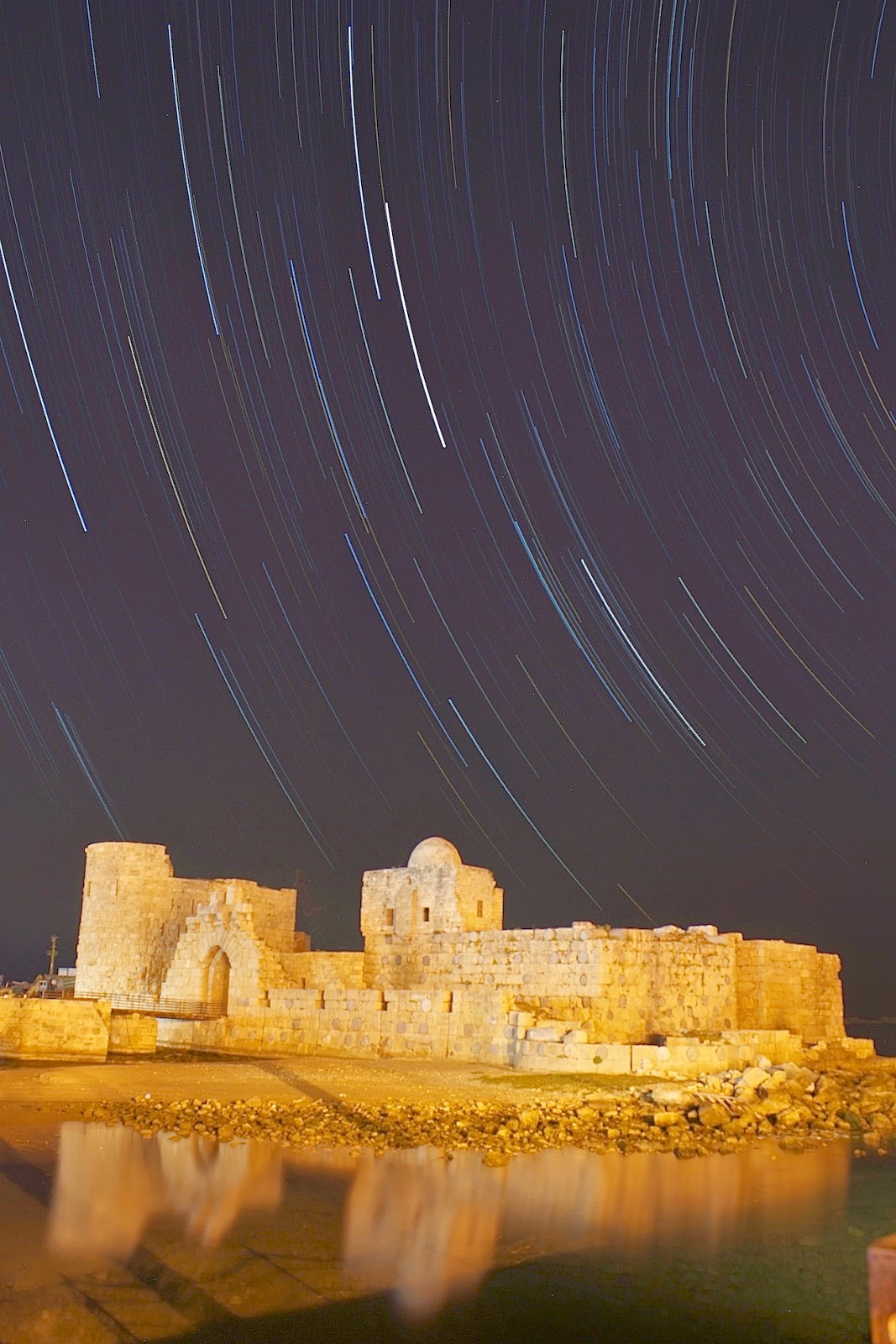Here’s my latest astrophoto of star trails over Sidon’s Sea
Castle. I’ll describe how I took it and hopefully convey a few tips and tricks
for taking your own similar photos.
I’ve already written about what star trails are and the
basics about taking them here: http://lebastrophoto.blogspot.com/2012/04/stellar-trails.html
My latest photo was taken using a DSLR camera on a tripod.
This is all you actually need for a star trails photo, in addition to a cable
release to lock the camera’s trigger for long or consecutive exposures. I took my gear
to a local restaurant that had this wonderful view of the sea castle. I then
positioned my camera-on-tripod in a corner of the restaurant that had an
unobstructed view of the castle and the sky above. I was shooting from a
relatively light polluted site, so I made sure to get at least a few relatively
bright stars in the field. In this case, this required framing the castle and
sky vertically to capture the maximum amount of stars.
Before I started
shooting, I focused my camera’s lens on a bright star; it turned out that at
the distance I was shooting, the castle and stars were at the same focus. Once
I framed the photo, I took several test-shots at different focal ratios. I
chose a low ISO, which is always best, if you can, to reduce grain in your
images. Once I found a focal ratio that did not over-expose the castle but
still captured the stars, I started shooting! In this case, the surrounding
lights were enough to illuminate the castle. In very dark sites, you may need to provide your own light source or use the Moon to illuminate foreground scenery. I took 30 second exposures with
the camera’s continuous shooting mode.
As described before, this technique helps minimize the effect of light
pollution were you to take a single longer exposure with trails appearing in a
single shot (which was the technique used in earlier film photography). I shot
for around one hour, then took my camera home and loaded the images on my computer.
Finally, I added the images to the free software StarStax ,which combined the individual 30 second frames into the
final image with trails. I did some editing and touching-up in iPhoto, and
voila! I hope you like the result!
Thanks for reading :)
and clear skies!






